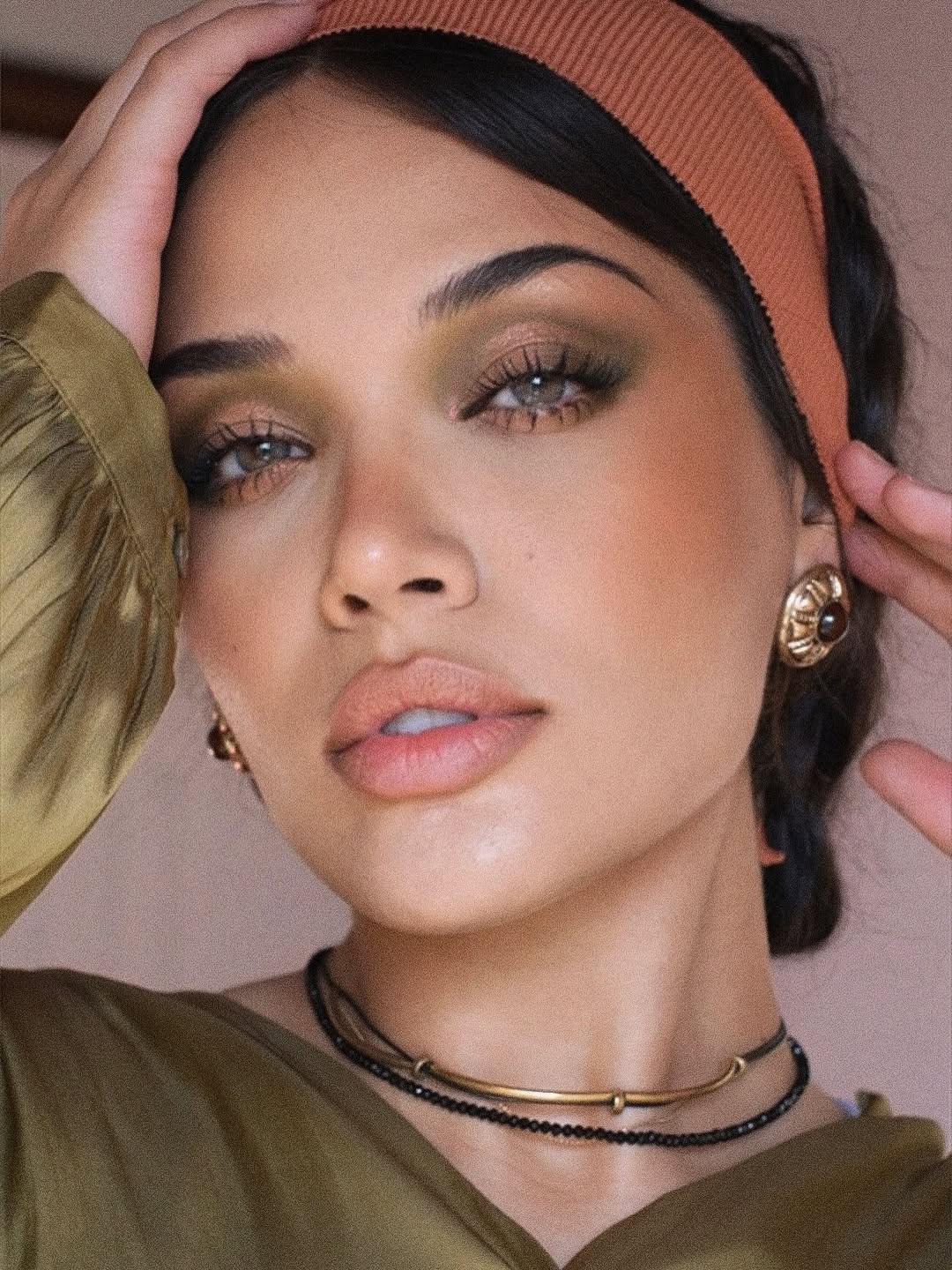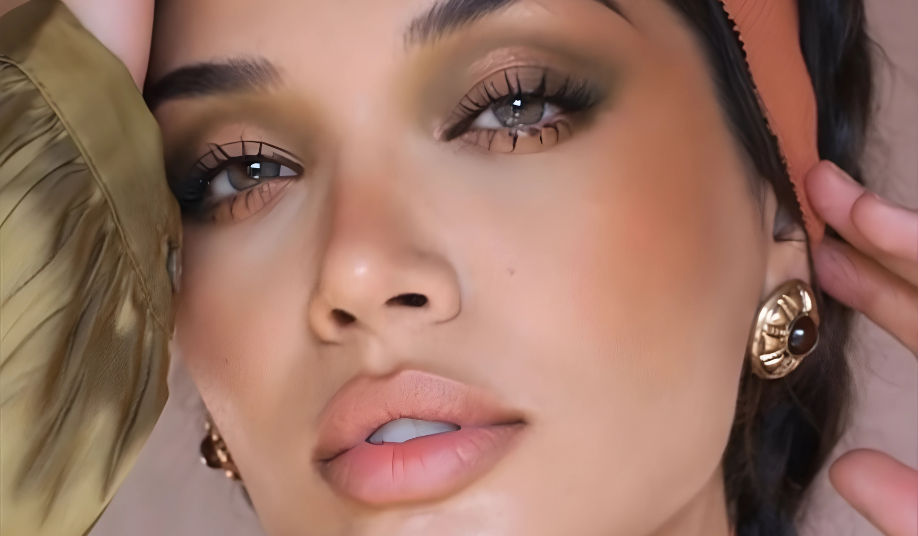There’s viral. And then there’s turn-into-Kajol-so-perfect-people-think-it’s-AI viral. Iranian beauty influencer Nasim Irani, known on social as Ncamua, has pulled off exactly that. In her latest Instagram reel, she morphs into Bollywood icon Kajol—jawlines, brows, eyes, the whole Kabhi Khushi Kabhie Gham energy—with nothing but makeup. No filters, no deepfake, just brush strokes and shade play.
The video, set to “Yeh Ladka Hai Allah”, unfolds like a mini-film: bare-faced Nasim slowly builds into full Kajol mode until the final reveal shocks you into a double take. Viewers didn’t just gasp; they debated whether it was AI. One top comment read: “This looked even better than AI.” The numbers back it: 30M+ views, countless shares, a TikTok-level frenzy.

The Performance of Transformation
What sets this apart isn’t just Nasim’s technical mastery. It’s the fact that she captured Kajol’s essence—the brows, the gaze, the nostalgia. People didn’t just see a look; they felt an era.
And this is where beauty meets psychology. Makeup, experts say, is often more than surface. Professional makeup artist Chantal Ciaffardini explains:
“Makeup and skincare, but above all makeup, truly feel like therapy, because through makeup I can discover more of my face. I can look at myself more, I learn to look at myself, I can understand that, perhaps, what I thought were flaws can become something to appreciate.”
Nasim isn’t just recreating Kajol; she’s also inviting audiences to reflect on identity, nostalgia, and transformation.
The Digital Media Mirror: Celebrity Perceptions & What’s Changing
This kind of transformation is more than entertainment—it’s a cultural mirror reflecting how beauty, celebrity, and identity collide online.
- Blurred lines between ‘real’ and ‘ideal.’ People assumed AI was at play because our eyes are now trained to expect digital perfection. A 2021 study in Perception found that professional makeup makes faces appear more attractive, feminine, and higher-status—but also heavier and less natural. Nasim’s transformation sits perfectly in this tension: professional yet uncannily natural.
- Artistry as global spectacle. In the past, makeup artists worked behind the scenes. Now, artists like Nasim are the show. With 1M+ followers, she’s transformed into Monica Bellucci, Cardi B, and more—making celebrity mimicry into cultural performance.
- Identity becomes performative. Kajol isn’t just a face. She represents Bollywood nostalgia, South Asian glamour, and cinematic memory. When Nasim transforms into Kajol, she’s not just copying—she’s reinterpreting that cultural symbol for a global audience.
- Algorithms reward spectacle. Engagement equals virality. Shock, disbelief, admiration—all fuel shares and watch time. Beauty in the digital age is about artistry, but also about strategy.
Expert Perspectives: Beauty, Digital, and Psychology
The industry knows this shift is real. Asmita Dubey, Chief Digital Officer at L’Oréal, notes:
“We believe that the future of beauty is physical, digital, and virtual, and we are shaping it with science, technology, and creativity.”
Her colleague Camille Kroely adds:
“The metaverse and Web3 are not just technological changes. They are part of a cultural movement by people and creators, and at L’Oréal we have already engaged with creators.”
That’s exactly what Nasim’s Kajol moment is: creativity that blurs physical artistry and digital perception.
Psychologists also recognize the power in these transformations. Dr. Tara Well, writing in Psychology Today, explains how beauty tutorials on TikTok and Instagram often serve a therapeutic purpose:
“The act of sharing such stories within the structure of a self-care routine can be surprisingly therapeutic … there are clear psychological factors that explain the appeal and effectiveness of this medium for processing personal challenges.”
So while viewers debate AI vs. reality, creators may be using makeup transformations to process identity, memory, or even cultural belonging.
And the digital art world is catching up too. As Vogue reported in its Beauty Expanded feature:
“Digital tools allow creators to overcome the constraints of reality and express identities in imaginative and fantastical ways.”
Nasim’s brush isn’t just applying eyeliner—it’s scripting identity in real time.
What This Means for the Beauty Industry
- Consumers will expect more. Transformations like these raise the standard for creators everywhere.
- Makeup artists become cultural translators. They’re bridging cultures, making Bollywood icons resonate in Tehran, Lagos, or Los Angeles.
- Authenticity becomes a new currency. As AI blurs lines, creators who reveal their process may gain more trust.
- Mental health matters. Experts warn of “filter dysmorphia,” where viewers compare themselves to impossible standards. Striking a balance is crucial.
Celebrity makeup artist Rina Das summed it up best:
“When someone can do a transformation so well that people think it’s AI, that’s a compliment to the artistry—but also a red flag about the expectations we’re setting for beauty.”
Final Thoughts
Nasim Irani’s Kajol transformation is more than a cool reel. It’s a cultural statement: makeup, media, and memory colliding. It reminds us that beauty isn’t just what you see; it’s what you think you see.
As the line between artistry and illusion gets thinner, one thing is clear: skill still matters. And maybe the next time you scroll past a transformation, the real question won’t be “Is this AI?” but “What does this say about how we see beauty now?”



